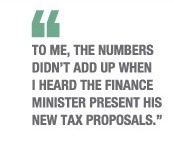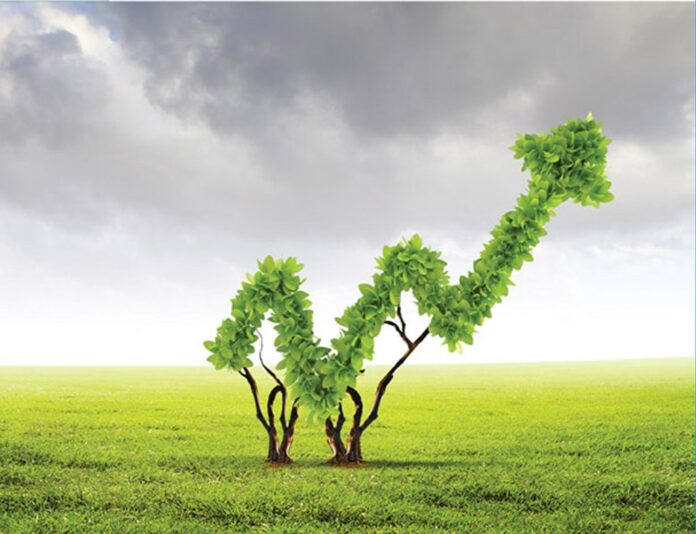
 When Finance Minister AMA Muhith in June 1 talked about tax measures in his budget speech in parliament, Wasim Hussain, a software engineer and one of the 12 lakh taxpayers of the country, felt something was wrong. Being a practitioner of computer science, Hussain is good with numbers, but he found the calculation of income tax, this time, quite vexing. “To me, the numbers didn’t add up when I heard the finance minister present his new tax proposals.”
When Finance Minister AMA Muhith in June 1 talked about tax measures in his budget speech in parliament, Wasim Hussain, a software engineer and one of the 12 lakh taxpayers of the country, felt something was wrong. Being a practitioner of computer science, Hussain is good with numbers, but he found the calculation of income tax, this time, quite vexing. “To me, the numbers didn’t add up when I heard the finance minister present his new tax proposals.”
Hussain contacted one of the accountants in his office and asked whether there would be any changes in the amount of tax he has to pay. Like most corporate houses, Hussain’s office deducts his income tax from his salary and pays it on his behalf.
The reply the accountant gave, after studying his case, shocked Hussain. His income tax has just been doubled!
HOW IT IS DOUBLED?
Hussain earns Tk. 60,000 a month, which means he earns Tk. 810,000 a year, including two festival bonuses. After deducting Tk. 200,000 which consists of house rent, medical, and other non- taxable allowances, his taxable income stands at Tk. 610,000.
taxable allowances, his taxable income stands at Tk. 610,000.
Out of this Tk. 610,000, Hussain does not have to pay taxes for Tk. 250,000, as per income tax rules. For the remaining Tk. 360,000, he has to pay a 10% tax (for the next Tk 400,000 slab), which means he needs to pay Tk. 36,000, per year, as income tax, if he doesn’t invest any portion of his income on any tax-free savings instrument.
After meeting his expenses, Hussain typically invests a portion of his income in savings instruments or primary shares to save on taxes. As his income is below Tk. 1,000,000, as per existing norms, Hussain would qualify for a rebate worth 15% of his investments, had he invested 30% of his taxable income.
The government, in this budget, has proposed to reduce that scope to 20%, from 30%. There lies the tricky part.
At current level, 30% of Hussain’s taxable income stands at Tk. 183,000 (30% of Tk. 610,000). A rebate worth 15% of Tk. 183,000 means Tk. 27,450 would get deducted from Hussain’s income tax liability of Tk. 36,000. Therefore, under the current arrangement, Hussain would have to pay only Tk. 8,550 as income tax.
liability of Tk. 36,000. Therefore, under the current arrangement, Hussain would have to pay only Tk. 8,550 as income tax.
Now, as the government has proposed to reduce that deductible portion to 20%, it means Hussain can claim the 15% rebate on only Tk. 122,000 (20% of Tk 6,10,000), which means only Tk. 18,300 would be deducted from his income tax liability of Tk. 36,000. Therefore, Hussain would end up paying Tk. 17,770 as income tax, which is double what he had been paying so far.
The amount of tax increases with the increase in income. A person who earns Tk. 100,000, a month, now, has to pay Tk. 45,000 as tax per year, whereas, previously, he needed to pay Tk. 25,500 per year. That’s an increase of almost 75%!
WHAT THE EXPERTS SAY?
Interestingly, when Parvez Iqbal, member, tax policy of National Board of Revenue (NBR), was contacted to shed light on this supposedly hidden tax burden, he accepted that income tax burden has increased and said that because of this new provision, additional tax would have to be paid.
Citing an example, he said that if someone earns Tk. 100,000, he might need to pay extra Tk. 10,000 because of this new provision. The calculation however shows that it’s not a jump of Tk. 10,000 for those earning Tk. 100,000 a month, rather it is Tk. 19,500.
Parvez Iqbal said that this new provision is included to modernise the tax measures and to increase the government income.
Commenting on the issue, a finance industry professional who prefers to remain anonymous, said that the government has not been transparent, considering the manner in which this increase has been slipped in. “There is no mention of this in the finance minister’s speech, although this is a major tax change.”
He said, assuming income levels rise at the rate of 10%, against inflation of 6% to 7%, the real income is around 3% to 4%. In this backdrop, increase in personal income tax burden at such astronomical rate is clearly unjustified and regressive.
“All tax payers, especially those with low levels of income, will be hit hard. Reduction of investment allowance will reduce levels of investment in a situation where the economy desperately needs to raise the level of investment as a percentage of GDP, to raise the level of GDP and alleviate poverty,” he added.
THE COUNTRY WITH THE LOWEST TAX-FREE INCOME CEILING
In fact, the tax-free income ceiling of Tk 2.5 lakh in Bangladesh is the lowest in South Asia.
In India, the tax-free income limit is INR 2,50,000, which, at the current rate of exchange, stands at BDT 3,25,000 with a starting tax rate of 5%. In Pakistan, the tax-free limit is 4,00,000 Pakistan Rupee (equivalent to BDT 3,10,000) and a starting tax rate of 2%. In Thailand, the limit is 1,50,000 Thai Bhat (equivalent to BDT 3,55,000) and a starting tax rate of 5%.
The percentage of tax payers in Bangladesh is the second highest among South Asian nations after Sri Lanka.
In Sri Lanka, 15% of people pay income tax, while 4% do so in Bangladesh. In India, 3.8% of people pay income tax compared to the 1 per cent in Pakistan.

Giving opinion on the matter World Bank lead economist Dr Zahid Hussain said, the tax-free income ceiling in Bangladesh was logical in the light of the country’s per capita income.
The tax-free level is calculated as twice the per capita income. With the current per capita income being USD 1602, the tax-free income level was theoretically correct, he said.
But when seen from the perspective of the country’s inflation rate, the tax-free income ceiling should be around Tk. 287,000, he added.
Dr AMB Mirza Azizul Islam, former adviser to the caretaker government, said different countries had their own ways of fixing the tax-free income ceiling. The level should be increased to Tk 2.75 lakh, he added.
The tax exemption limit for general taxpayers has remained unchanged at Tk. 2.5 lakh for the last three years—the last change was made in the Finance Act, 2015. The lowest tax bracket, too, has remained unaltered at 10 per cent.
THE FINANCE MINISTER HAS HIS OWN EXPLANATION
Meanwhile, Finance Minister AMA Muhith has shown a correlation between the per capita GDP and the tax-free limit to justify keeping the ceiling unchanged. The per capita GDP is derived from the income of the entire population, including more than 91% of the population that is either not required to pay income tax or evades it. The reality is that inflation has hovered within the range of 6% to 7% in the past three years.
In his budget speech in Parliament, the finance minister proposed that the tax exemption threshold would be Tk. 3 lakh for women and senior citizens above 65 years, Tk. 4 lakh for persons with disability, and Tk 4.25 lakh for war-wounded gazetted freedom fighters.
The existing tax exemption threshold is Tk. 2.50 lakh in general cases.
However, the threshold was higher for special classes of taxpayers, including female taxpayers.
Muhith mentioned that the tax exemption threshold in Bangladesh was more than 200% of per capita GDP. In most developing countries, the ratio is about 100%. “Our inflation rate is low at this moment. Point-to-point inflation is around 5 per cent only,” he added.
However, the finance minister proposed that the tax exemption threshold be kept unchanged for the next fiscal year. However, he also proposed that the threshold would be Tk. 4 lakh in place of Tk 3.75 lakh for persons with disability.
“We had earlier fixed a respectable tax exemption threshold for gazetted war-wounded freedom fighters,” he said.
“Taxpayers with a total income exceeding the tax exemption threshold are currently paying a minimum tax of Tk. 5,000 if they are residing in any of the city corporations of Dhaka North, Dhaka South, and Chittagong, Tk 4,000 if residing in any other city corporation and Tk. 3,000 if residing in any other place. I propose that these rates should be kept unchanged,” the finance minister added.








